What is Judo?
Judo has been a Japanese martial art and an Olympic combat sport since 1964.
This self-defense sport aims to improve motor coordination, concentration, self-confidence, in addition to strengthening the physique, spirit and mind.
Currently, judo is a sport widely practiced in the world by adults and children, men, women and the elderly.
Origin and History of Judo
The practice of judo was created in 1882 in Japan by the master Jigoro Kano. In the same year, he created the Kodokan Institute which taught the techniques and philosophy associated with the sport.
In the words of its creator:
Art in which physical and spiritual strength is used to the full.
To create this martial art, he brought together some elements of other ancient martial arts, and shortly after being created, it was made official in Japan.
To a large extent, judo is derived from Ju-jutsu who uses his body to attack his opponent and defend himself.
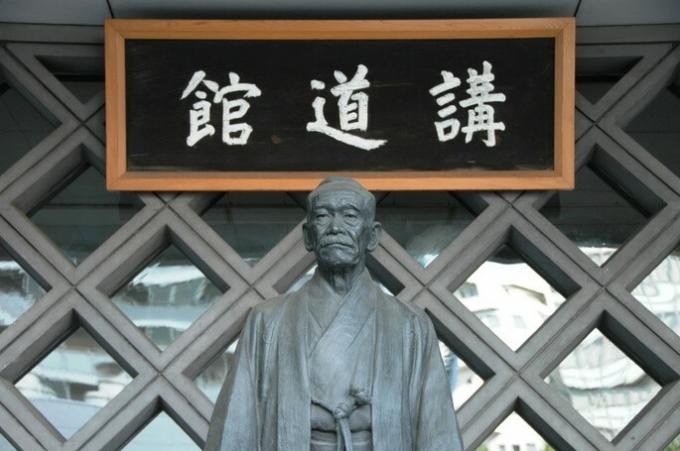
Foundation of the first Judo school
The first judo school was created in Japan by its founder, Jigoro Kano: the Kodokan.
In addition to developing combat techniques for the sport, the founder combined this martial art with the philosophy ippon-shobu (fighting for the perfect point).
For that, he developed 8 basic principles related to good deeds of individuals:
- Courtesy, to be polite in dealing with others;
- Courage, to face difficulties with bravery;
- Honesty, to be truthful in your thoughts and actions;
- Honor, to do what is right and keep to your principles;
- Modesty, not to act and think in a selfish way;
- Respect, to live harmoniously with others;
- Self-control, to be in charge of your emotions;
- Friendship, to be a good companion and friend.
Judo in Brazil
In Brazil, this martial art arrived at the beginning of the 20th century with Japanese immigration to the country. From 1920 onwards, some judo academies were created in the city of São Paulo.
The practice also began to spread to other states in Brazil, however, it was only institutionalized with the creation of the Brazilian Judo Confederation (CBJ) in 1969.
The Creation of the Brazilian Judo Confederation (CBJ)
The Brazilian Judo Confederation (CBJ) was founded on March 18, 1969 in Rio de Janeiro. Without a doubt, she allowed the development of judo in Brazil, administering, coordinating and organizing the practice.
Currently, it has federations in the 27 states of the country and more than one million practitioners in Brazilian territory.
Due to the work of the Confederation and the expansion of the sport in the country, Brazil was conquering several medals and, since 2012, judo was considered the Brazilian sport with the highest number of medals in the games Olympics.
The motto of the Brazilian Judo Confederation is: “Ready to Win”.
Main features of Judo: summary
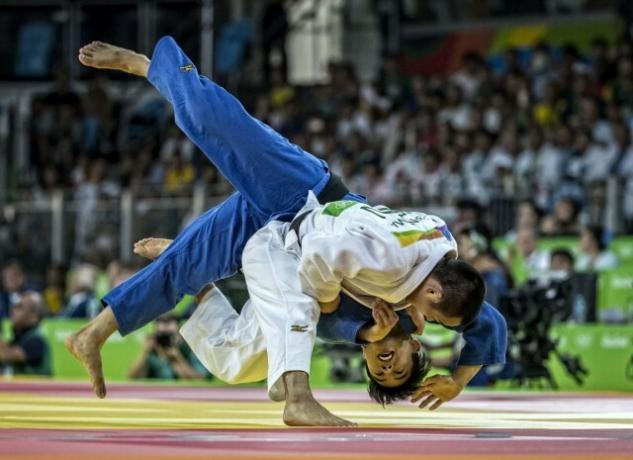
- Judo is a martial art that was created in Japan in the late 19th century.
- The creator of judo is the Japanese master Jigoro Kano.
- Judo uses attack and defense techniques performed with the body.
- It was at the 1964 Tokyo Games that judo became an Olympic sport.
- The first judo school, the Kodokan, was created by its founder Jigoro Kano in Japan.
- From the beginning, judo was created so that everyone could participate: men, women, children and the elderly.
Judo rules
The main objective of judo is to take your opponent to the ground. The fights between the two judokas takes place on the mat.
Judo fight time
Judo fight time varies by category, lasting 5 minutes for men and 4 minutes for women.
During this period, the fight between two judokas must present a winner.
However, if that doesn't happen, another three minutes are added to the fight, a moment called Golden Score (gold score).
Judo Techniques, Moves and Strikes
Judo movements are based on techniques that involve different parts of the body, such as: feet, arms, legs and hips.
Depending on where and how they happen, they are divided into two large groups:
1. Nage-Waza: standing techniques that involve movements with the arms, legs and hips.
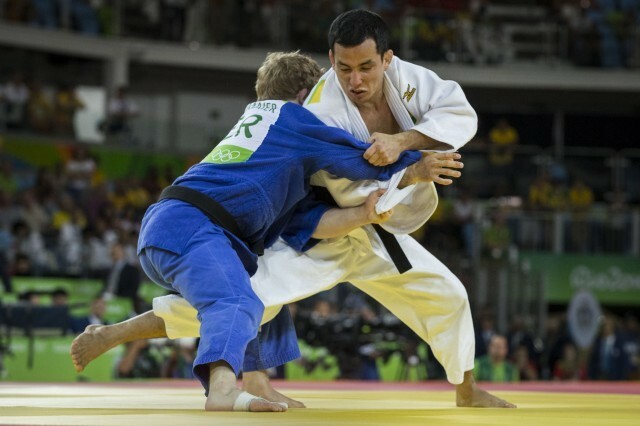
Among them, we have:
- Te-waza: arm techniques
- Koshi-waza: hip techniques
- ashi-waza: leg techniques
- Sutemi-Waza: Sacrifice Techniques
2. Katama-waza: techniques that take place on the floor (tatami) and that involve immobilization, strangulation and arm lock techniques.
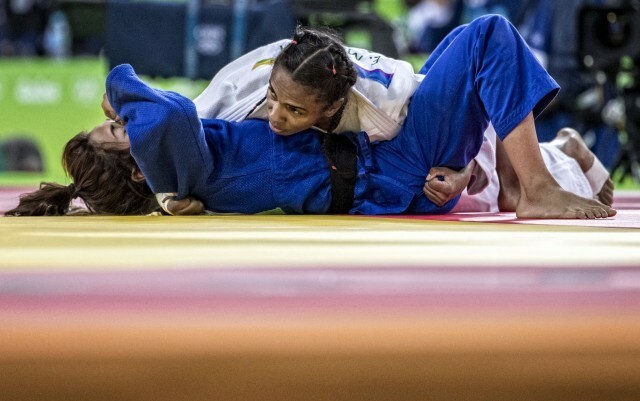
They tooth, we have:
- Osaekomi-waza: immobilization techniques
- Shime-waza: strangulation techniques
- Kansetsu-waza: armbar technique
The Judo Belts
Judo has several tracks (called hello) that indicate the graduation of the judoka. It is noteworthy that the practice of judo has two stages of improvement called Kyu and Dan.
The order of judo tracks (Kyu) has the following colors, with white being the lowest and brown the last range of judo, which indicates a lot of experience:
- White belt (8th kyu)
- Gray belt (7th kyu)
- Blue belt (6th kyu)
- Yellow belt (5th kyu)
- Orange band (4th kyu)
- Green belt (3rd kyu)
- Purple belt (2nd kyu)
- Brown belt (1st kyu)
After conquering the last track of Kyu, the judoka moves to the 10 stages of Dan.
At this time of improvement, from the first to the fifth Dan the fighter wears a black belt with white stripes. Each stripe indicates one of the Dans (1 to 5):
- 1st Dan: black belt with a white stripe
- 2nd Dan: black belt with two white stripes
- 3rd Dan: black belt with three white stripes
- 4th Dan: black belt with four white stripes
- 5th Dan: black belt with five white stripes
From 6th to 8th Dan, the participant will wear a white and red sash, and in the last levels — 9th and 10th Dans — the sash is entirely red.
Judo scoring
To score points in judo it is necessary for one of the judokas to fall and this can happen in several ways:
- Yuko: when the judoka falls on his side.
- Wazari: when the judoka falls backwards on the mat, but with little speed.
- Ippon: when the judoka lands perfectly on his back on the mat.
Judo equipment
The traditional judo uniform is the judoji, consisting of pants and white or blue blouse. Over the top of the blouse, at the waist, the colorful graduation sash is tied.
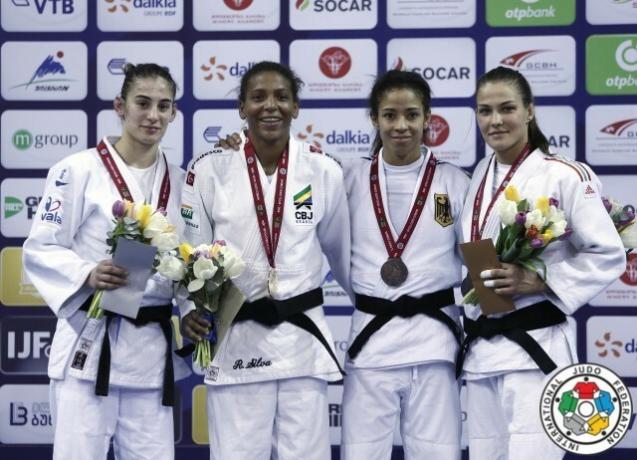
Judo and other martial arts
In addition to judo, many other combat sports have crossed borders and currently have fans around the world and in Brazil. All of them have differences in blows, rules, moves and techniques. Check out the most known ones below:
- Capoeira: created in Brazil.
- Karate: Created in Japan.
- Jiu-jitsu: created in Japan.
- Aikido: created in Japan
- Taekwondo: created in Korea.
- Kung Fu: created in China.
- Muay Thai: created in Thailand.
Some facts about Judo
- In Japanese, the term judo is formed by two words “Ju” (soft) and “Of” (path or path) and means “the smooth (or smooth) path”.
- The Judo Symbol is a cherry blossom that represents the Kodokan. In Japan, the flower known as Sakura, symbolizes life, love and beauty.
- The Kanji (Japanese script) character for judo is: 柔道.
- Some judo moves have been banned as they can affect the health of those involved.
Bibliographic references
International Judo Federation (IJF)
Brazilian Judo Confederation (CBJ)


